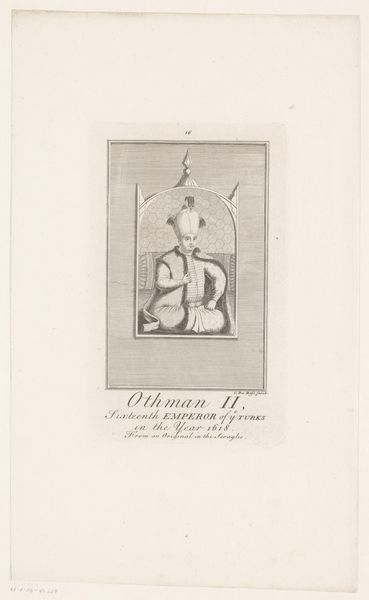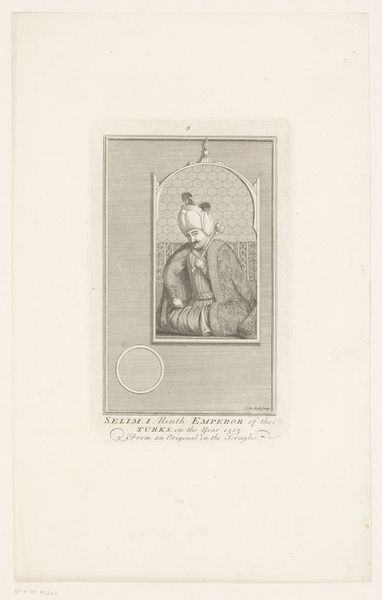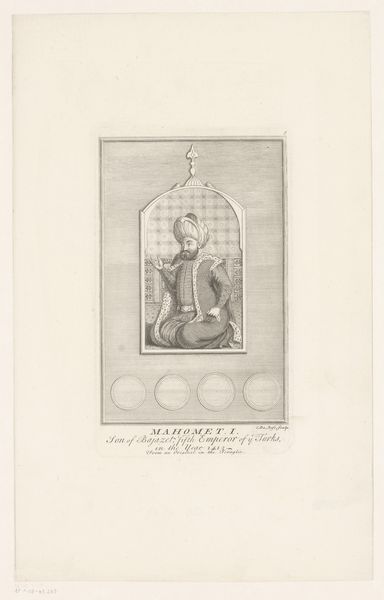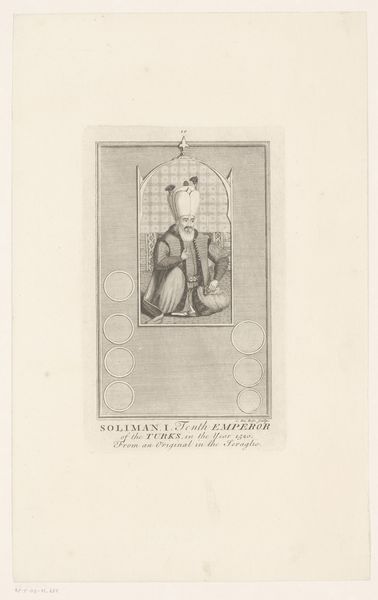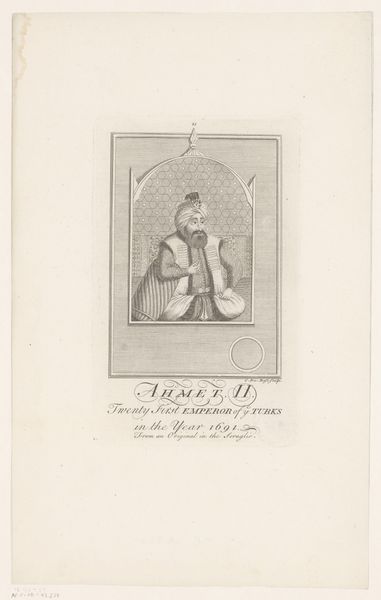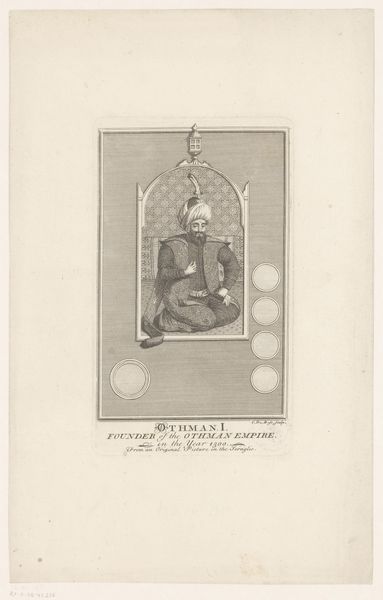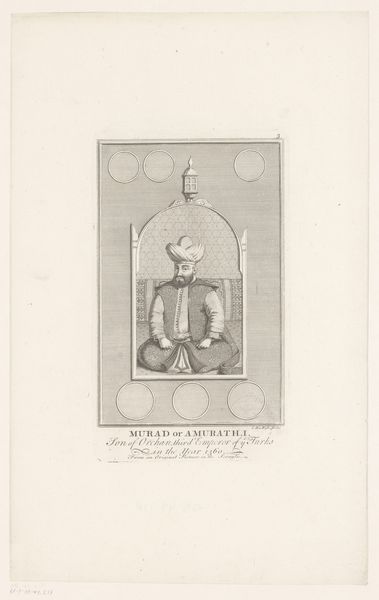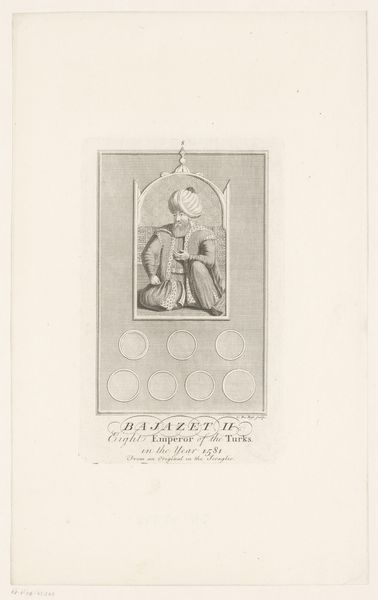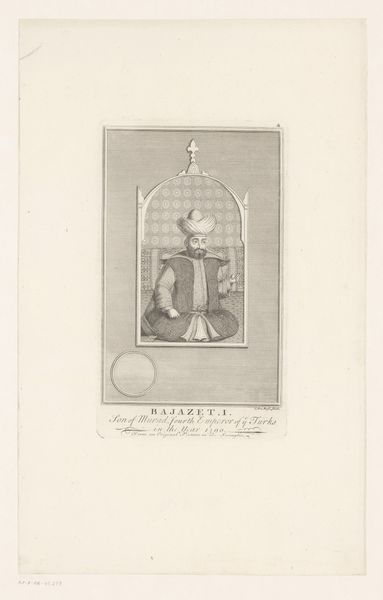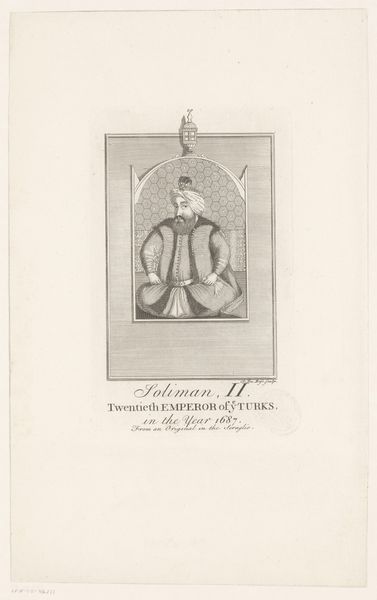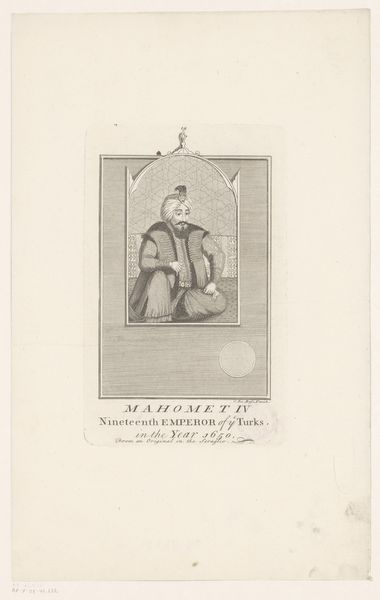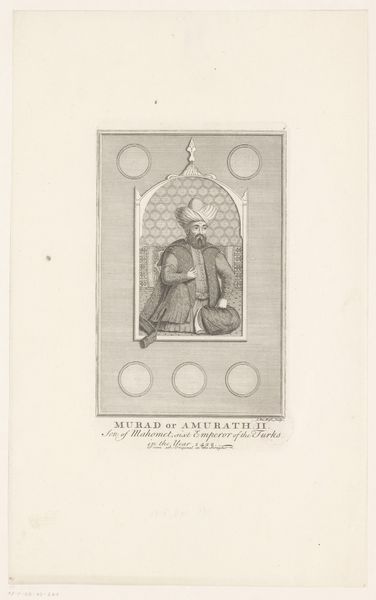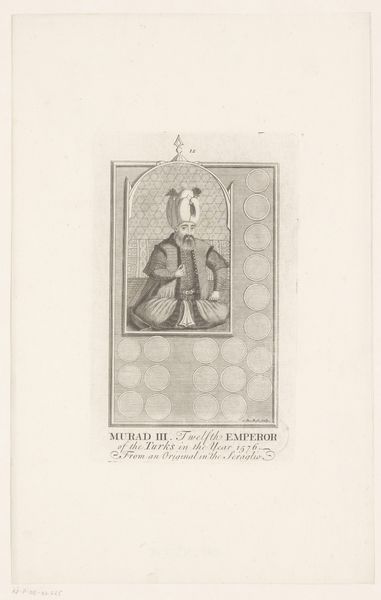
print, engraving
#
portrait
#
baroque
# print
#
old engraving style
#
figuration
#
form
#
personal sketchbook
#
line
#
islamic-art
#
history-painting
#
engraving
Dimensions: height 195 mm, width 122 mm
Copyright: Rijks Museum: Open Domain
This is Claude DuBosc's print "Portret van Ibrahim I", made sometime between the late 17th and early 18th century. As an engraving, the image is comprised of lines cut into a metal plate, inked, and then transferred to paper under pressure. Notice how the fineness of the lines creates a detailed likeness of Ibrahim, eighteenth Emperor of the Turks; his sumptuous robes and imposing turban show his status, and the pattern of the fabric behind him lends depth to the image. The plate has been worked with care; the texture is achieved through many hours of labor, giving value to the depiction of labor. Prints such as these facilitated the distribution of images, allowing them to reach a broader audience beyond the elite. The original artwork was in the Seraglio, but, through the printmaking process, Dubosc democratized the image, making it available to all. This demonstrates how the techniques of engraving and printing are tied to wider social issues of labor, politics, and consumption, making the process as important to understanding the artwork as the image itself.
Comments
No comments
Be the first to comment and join the conversation on the ultimate creative platform.
